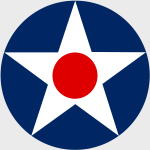Air Force 1 AF10111 USAAC North American B-25B Mitchell Medium Bomber - Lt. Richard E. "Dick" Cole, 17th Bombardment Group "Doolittle's Raiders", USS Hornet (CV-8), April 18th, 1942 [Signature Edition] (1:72 Scale)
"In the future, war will be waged essentially against the unarmed populations of the cities and great industrial centers."
- Italian General Giulio Douhet
 Built by North American, with no previous experience on multi-engined aircraft, the B-25 Mitchell proved to be one of the most versatile combat aircraft to see action in World War II. So impressed with what they saw on the drawing board, the USAAC ordered 184 aircraft -- to be designated the B-25 -- before metal had even been cut on a revised design.
Built by North American, with no previous experience on multi-engined aircraft, the B-25 Mitchell proved to be one of the most versatile combat aircraft to see action in World War II. So impressed with what they saw on the drawing board, the USAAC ordered 184 aircraft -- to be designated the B-25 -- before metal had even been cut on a revised design.
Christened the Mitchell after maverick army bomber proponent William 'Billy' Mitchell, the bomber fought not only with the USAAF in the Pacific and ETO/MTO, but also with US Navy/Marine Corps, British, Dutch and Australian units. By war's end, the veteran Mitchell had outlasted its rivals from Douglas and Martin to become the most prolific American medium bomber of the conflict. Today some 34 remain airworthy across the globe.
This particular 1:72 scale replica of a B-25B bomber was flown by Lt. Colonel Jimmy H. Doolittle during his April 18th, 1942 raid over Tokyo. Signed by his co-pilot, Richard E. "Dick" Cole.
Sold Out!
Dimensions:
Wingspan: 11-1/4-inches
Length: 8-3/4-inches
Release Date: December 2015
 Historical Account: "They Flew From Shangri-La" - The Doolittle Raid of April 18th, 1942, was the first air raid by the United States to strike the Japanese home islands during World War II. The mission was notable in that, for the only time in US military history, United States Army Air Forces bombers launched into combat from a US Navy aircraft carrier. The Doolittle Raid demonstrated that the Japanese home islands were vulnerable to Allied air attack, and it provided an expedient outlet for US retaliation for Japan's attack on Pearl Harbor on December 7th, 1941.
Historical Account: "They Flew From Shangri-La" - The Doolittle Raid of April 18th, 1942, was the first air raid by the United States to strike the Japanese home islands during World War II. The mission was notable in that, for the only time in US military history, United States Army Air Forces bombers launched into combat from a US Navy aircraft carrier. The Doolittle Raid demonstrated that the Japanese home islands were vulnerable to Allied air attack, and it provided an expedient outlet for US retaliation for Japan's attack on Pearl Harbor on December 7th, 1941.
The raid was planned and led by Lieutenant Colonel Jimmy Doolittle, already a famous civilian aviator and aeronautical engineer before the war. The raid, however, had its roots in the mind of Navy Captain Francis Low, who early in the war predicted that, under the right conditions, twin-engined Army bombers could be successfully launched from an aircraft carrier.
Subsequent calculations by Doolittle indicated that the B-25 Mitchell could be launched from a carrier with a reasonable bomb load, hit military targets in Japan, and fly on to land in China.









